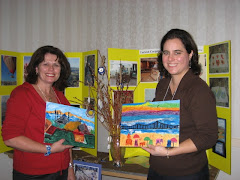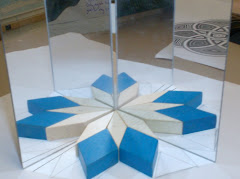There is a widely held but quite erroneous belief that figurative painting is not found in Islamic art due to prohibition by the Koran. Religious rulings issued only in the ninth century discouraged the representation of any living beings capable of movement but they were not rigidly enforced until the 15th C. Figurative art is especially rich in tiles as well as stone and stucco reliefs of the Seljuk period, adorning both secular and religious relief monuments. The subjects included nobility as well as servants, hunters and hunting animals, trees, birds, sphinxes, lions, sirens, dragons and double-headed eagles.*Iznik Tiles are world famous tiles produced in the city of Iznik, formally known as Nicaea. Iznik is an ancient, lovely walled town on the shores of Lake Iznik. Earthenware’s had been made here since the 7th B.C. Iznik is the city that launched a thousand tiles. Set on the shores of a peaceful lake just a short boat and bus ride from Istanbul, Iznik is a delightful small town with such an intriguing history.*Some of the most beautiful floral art of all time came from the Anatolian city of Iznik.*In 1331 it was the turn of the Ottomans to take control of Iznik and it was the Ottomans who helped t he town stamp its even more famous mark on history.*In 1514 Sultan Selim I occupied Tabriz in Iran and exiled its tile makers to Iznik. There they set up shop and added a precious coral red glaze to the more conventional blue and white tiles. The rest as they say ‘is history’. Iznik tiles went on to grace mosques worldwide but especially those of Istanbul. Unfortunately their popularity was also to be their downfall. So much did Sultan Ahmet love the tiles that when he started work on his great ‘Blue’ Mosque he insisted that the Iznik tile makers should work on nothing else until it was completed. In the way of things enthusiasm didn’t necessarily translate into decent wages and many of the tile makers voted with their feet and headed out for better paying jobs in Kutahya. The inevitable result was that Kutahya was soon ‘in’ and Iznik ‘oput’ in tile fashion circles.*Is is no surprise that the collapse of the pottery industry in Iznik in the 17th C parallels the decline of the empire itself.-Reputedly there were 300 functioning kilns in Iznik when work began on the Blue Mosque and only nine still in business when it was completed seven years later.*Iznik production began in the Byzantium period but reached its perfection in the 16th & 17th C during the Ottoman period*Iznik tiles are heavily created by the quartz (clay is 80% quartz) found in this region. The quartz in the clay gives it is great whiteness. This type of clay is very difficult to work with, requiring high temperatures. The clay is very porous which acts to protect the clay against the extreme temperatures which allows it to expand and to contract if used outdoors.*Iznik tiles are very suitable for mosques because of their acoustic abilities and their ability to bend and conform to various shapes.*Tile making is one of the oldest and most respected arts in Turkey.*Decorative motifs and patterns found on Iznik Tiles are a rich blend of Greek, Roman, Ottoman, Seljuk and Arabic influences that contributed to Turkish art.*The decorative patterns used are: swirling leaves, clusters of stylized tulips, delicate floral balanced with geometric rhythms.*In addition to tiles, the town's potteries continued to produce china ware for sale to the public as well as the palace*The earliest tiles made at Iznik were blue and white.*The blue and white Chinese porcelain and celadon ware which poured into the markets of the Near East from the 14th century onwards became extremely popular among the wealthy who could afford such precious objects. Iznik's potters had to compete to survive, and they did so by imitating the Chinese designs from Yuan and early Ming. They began to turn out plates and dishes similar to the much admired Chinese porcelain(blue & white) and before long had not only mastered these designs but began to give them new forms according to their own tastes. The result found favor not only within the Ottoman Empire but beyond Iznik potteries. Blue and white plates, bowls, lamps, candlesticks and other items made in Iznik during the 15th century are decorated in the style we now, consisting of scrollwork and floral designs, which was popular during the reign of Sultan Mehmed II (1451-1481).*Turquoise was added to the traditional Iznik palette of blue and white from the 1530s onwards.*From the 1540s onwards, mauve and purple also appear in Iznik designs, followed by green and the exquisite coral red unique to Iznik ware.*In addition to a wide range of flowers, pomegranates, artichokes and tree motifs occur in the compositions of this period. The tiles and other pieces were exuberantly decorated with hyacinths, tulips, carnations, roses, and stylized floral scrollwork and geometric patterns.*The Turkish Ministry of Culture proclaimed 1989 as Iznik Year, and numerous events and activities relating to Iznik pottery were held.
Wednesday, April 2, 2008
Subscribe to:
Post Comments (Atom)































1 comment:
I liked learning that the word for pottery is cheke. Watching the people make the pottery and watching them keep their hand very steady so they won't mess up was facinating.
Post a Comment